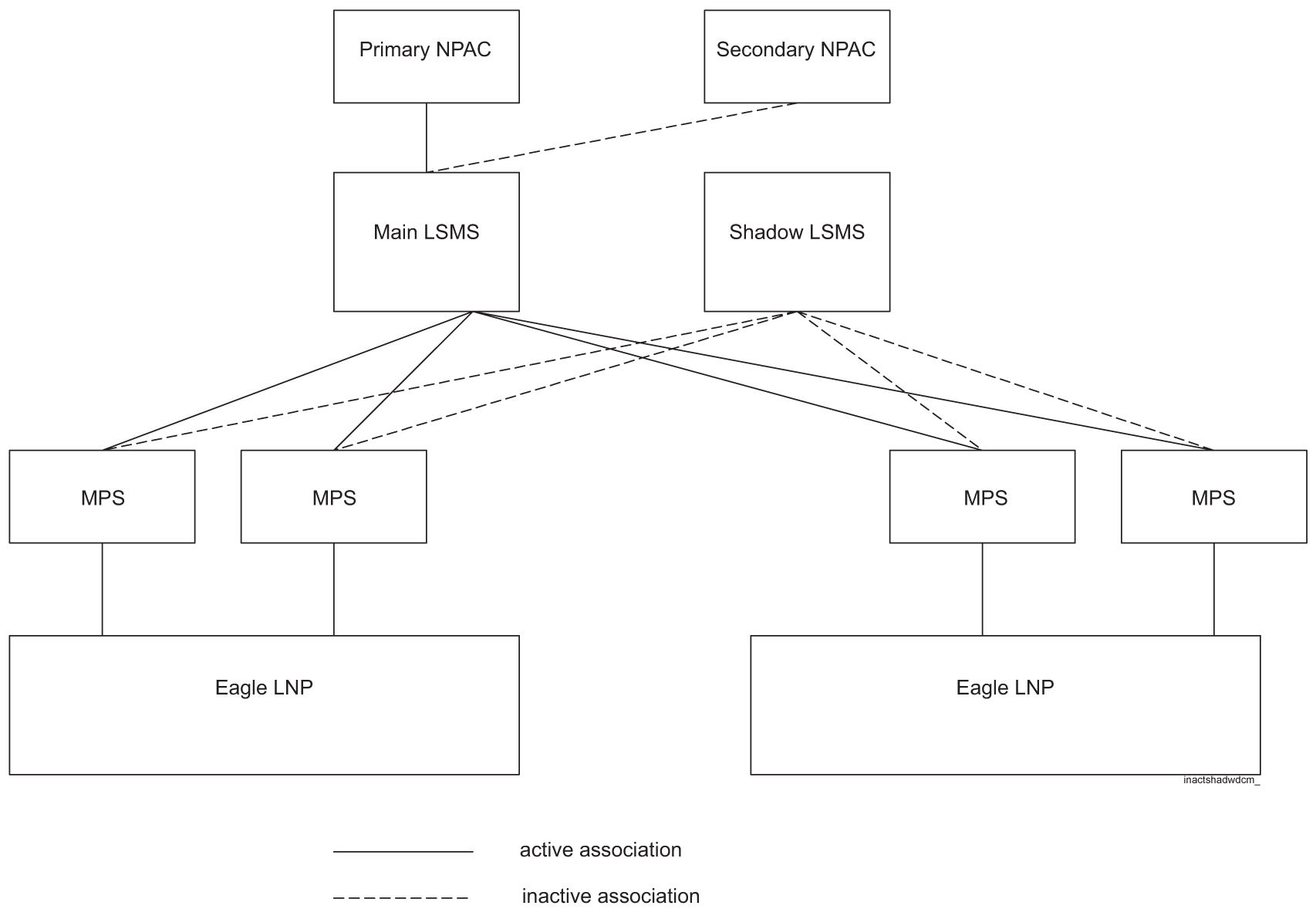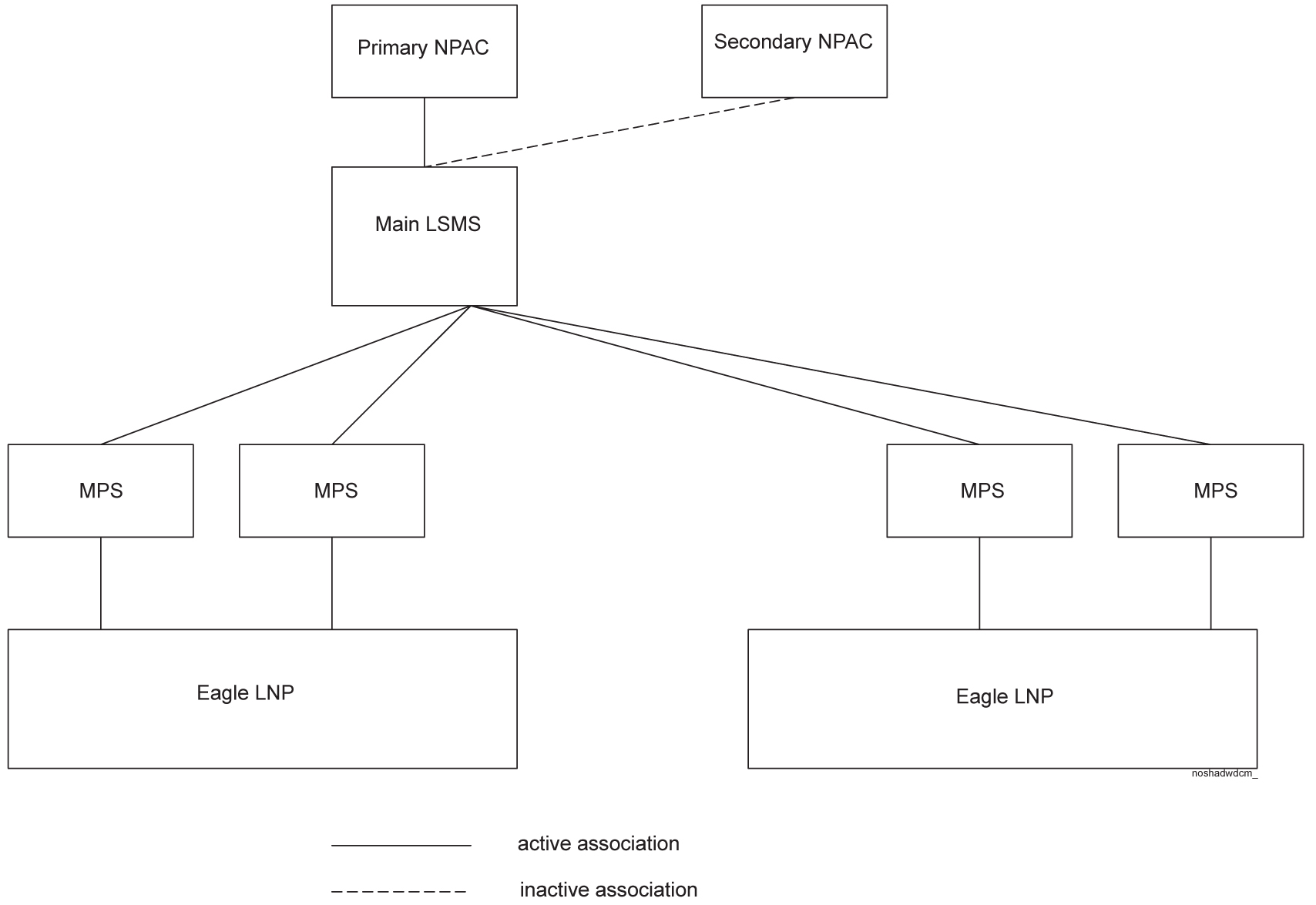Choose one of the following backup strategies, in which a shadow LSMS is defined to be an entire LSMS, with its own service provider ID, located in a separate geographical location from the main LSMS:
- Active shadow
- Inactive shadow
- No shadow
The various backup strategies provide different methods for ensuring that the shadow LSMS contains the same data as the main LSMS.
The following sections provide an overview of each strategy. Detailed descriptions or recovery procedures for each strategy are described in Performing Disaster Recovery with an Active Shadow LSMS through Returning Operation from Shadow LSMS to Main LSMS .
Using an Active Shadow
Figure 1 shows the configuration of a main LSMS that uses an active shadow as its backup.
An active shadow LSMS is an entire LSMS that is active and has active associations with each NPAC from which the LSMS needs data (only one NPAC is shown in Figure 1).

The disaster recovery backup strategy for this configuration provides the least out-of-service time for the LSMS. The recovery procedures for this strategy are described in Performing Disaster Recovery with an Active Shadow LSMS.
Using an Inactive Shadow
Figure 3 shows the configuration of a main LSMS that uses an inactive shadow as its backup.
The shadow LSMS does not maintain active connections with the NPACs that supply data to the main LSMS. However, disaster recovery is still more feasible than using no shadow, especially for disaster situations in which the physical site of the main LSMS is damaged (such as fire or natural disaster).

With this configuration, during disaster recovery you need to restore all databases from the NPAC. The recovery procedures are described in Performing Disaster Recovery with an Inactive Shadow LSMS.
Using No Shadow
Figure 3 shows the configuration of a main LSMS that has no shadow as its backup.

When no shadow LSMS exists, disaster recovery requires immediate repair of the main LSMS and its physical site, and then restore all databases from the NPAC. The recovery procedures are described in Performing Disaster Recovery without a Shadow LSMS.